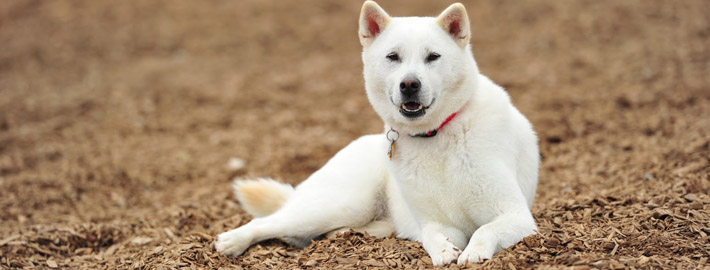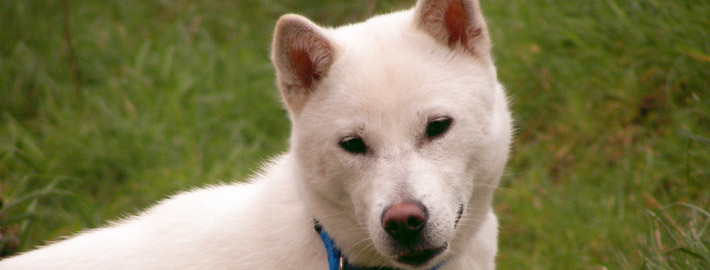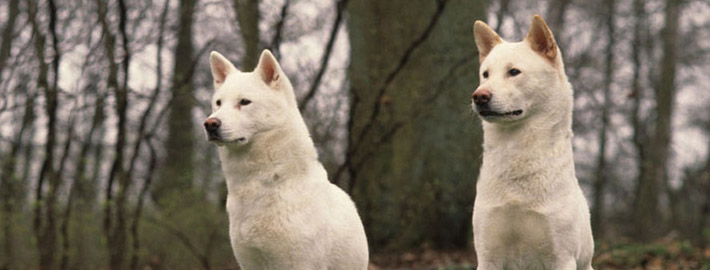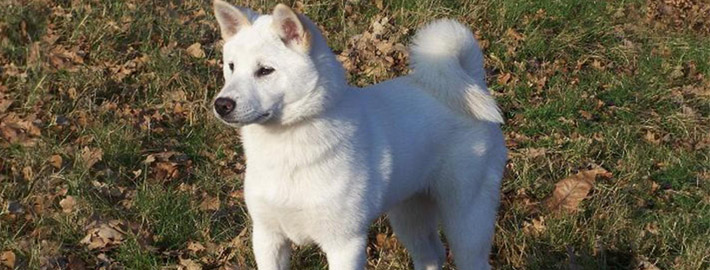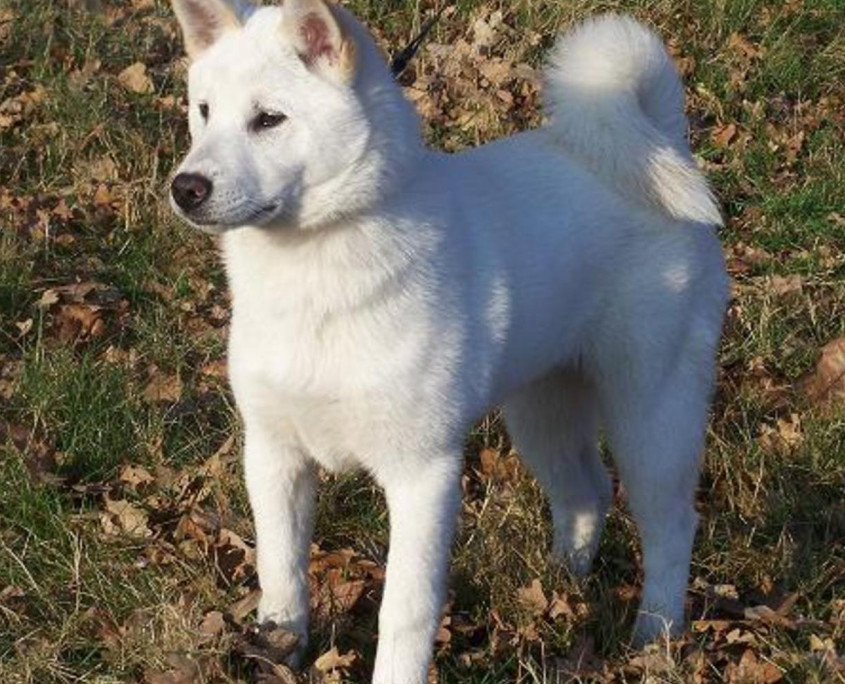What makes the Kishu Inu Unique?
Kishu Kens is a one person/one family dog. They tend to be courageous and fearless as hunters, but will be loyal with their owners. They have got a strong prey commute, and will search for small animals. They actually well with additional dogs, nonetheless, when socialized well since puppies, but due to their pack instincts they could cause some fights for dominance.
Breed Groups
Page Contents
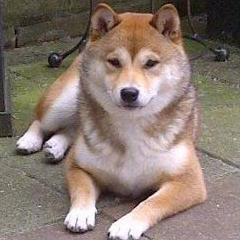
SnapShot
| Size: | Males – 43 to 56 cm (17 to 22 inches) Females – 43 to 56 cm (17 to 22 inches) |
| Weight: | Males – 13 to 27 kg (30 to 60 pounds) Females – 13 to 27 kg (30 to 60 pounds) |
| Origin: | Japan |
| Life Span: | 11 – 13 Years |
| Colour: | White (Most prevalent color), also Red and Sesame (red hairs with black tips). |
| Litter Size: | Average of 3 puppies |
Is the Kishu Inu Right For You?
The Kishu Ken is loyal and loving with its family. It is a friendly, quiet and calm, but tough and agile breed. Intelligent, clean and easily housebroken. Can be aloof with strangers; socialize well. Not a barker. Does well with other dogs. An excellent pack hunter, the Kishu stalks prey rather than barks. It has a high prey drive and should be socialized with cats at a young age and should not be trusted with other small non-canine pets such as hamsters and guinea pigs. The Kishu has been known to climb trees to catch prey. This breed needs an owner who is calm, but firm, confident and consistent, displaying a natural authority over the dog.
In 5 Words
- Faithful
- Docile
- Noble
- Alert
- Dignified
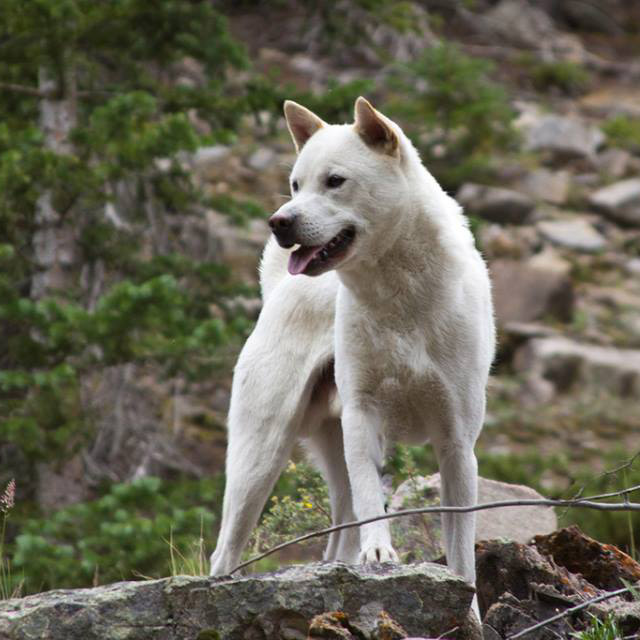
Characteristics
Learn About the Kishu Inu
Description
General Description
The Kishu Ken is a medium-sized sturdy dog. The coarse double coat is short and straight with a thick, soft undercoat. Coat color mostly comes in white, but occasionally brindle, sesame or red do occur. The nose is usually black, but can be brownish or pink. Has a scissor or level bite. Has a broad head with prick ears inclined forward that are on the smaller side. Tail curls over the back.
Size
The Kishu stands 17-22 inches (43–55 cm) tall, averages 30–60 pounds and is considered a medium-sized dog.
Coat
Double, with a harsh, straight outer coat and a soft, dense undercoat. The hair on the cheeks and the tail is fairly long.
Short History of the Kishu Inu
Kishu Ken were originally established for hunting wild boar and deer in mountainous Wakayama prefecture. The original breed comprised mostly colored individuals. Approximately 70% of the breed was said to be non-white before the popularity of a primarily white line of Kishu spiked creating the primarily white breed of today.
The Kishu is a Foundation Stock breed with the American Kennel Club. The American Kishu Registry is the official Kishu registry in the United States and is recognized as such by AKC. Other registries include Japan Kennel Club (JKC) and Nihonken Hozonkai (NIPPO), both in Japan. The Nihonken Hozonkai is considered the main registry of the breed in its parent country and is responsible for the original breed standard. The Kishu has been recognized as a natural monument of Japan since 1934. Since this breed is so rare in North America and Europe, you may only get a chance to see it in its native homeland, Japan.
Temperament
The Kishu is a powerful, athletic, and alert animal. Like most Nihon Ken they are independent thinkers, and have a very strong desire to hunt. A Kishu should be fearless, but not aggressive. They can be territorial and may make good watch dogs, but are not by nature guard dogs or protection dogs. The Kishu as a breed tends to be slightly more approachable by strangers than the other Japanese breeds.
Caring for Your Kishu Inu
General Health
Health problems with the Kishu Ken are occasional Hypothyroidism (low thyroid), which is not uncommon among the Japanese breeds, and affects perhaps one in ten dogs. It is not life-threatening and treatment is a thyroid pill daily for the optimum health of the dog, as with humans. Food and environmental allergies are not uncommon in the Kishu Ken.
The other known issue is Entropion, a genetic defect affecting the eye in which the eyelid turns inward and the lashes scratch the eyeball. This is connected in part to the triangular shape of the eye in the Kishu Ken. This requires surgery to prevent the loss of vision in the eye and continual pain to the dog.
Grooming & Bathing
Brush weekly with a firm bristle brush, and bathe only when necessary. Trim nails and check ears regularly for dirt, wax buildup or infection.
Exercise & Training
The Kishu needs adequate space to roam and exercise, meaning a house with a yard or urban environment with a fence. They need regular exercise on a leash, taking walks or runs. They can also be given a job to do such as herding to satisfy their exercise.

